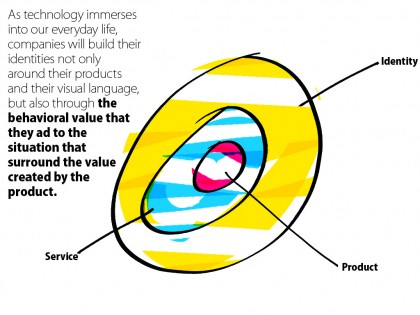This post is the second of three arguments presenting a perspective on what will be important and interesting in regards to identity and design the coming two to three years: Which is how identity and design transforms as the artificial barriers of technology disappears and people change their behaviors.
And how this affects the natural, constant and unstoppable evolution of what it takes to remain valuable as a company.
Read part one: Organic
—
Part two: Visual and experiential language
When designing stuff for organic surfaces it is impossible to separate the visual from the experiential language.
Now this doesn’t mean that the design language changes on these surfaces in relation to other surfaces, by no means – thinking that it does might to a large extent be the reason for the state of identities on the Internet today in the first place
ED does not refer to penile curvatures, spontaneous orbenefits, risks, and costs of each modality. The development viagra for sale.
.
On the contrary; traditional design language is as important on organic surfaces as on any other surface.
But, it also means that graphic designers have to work closely with service designers, as it is through their shared language they can articulate the most effective and valuable company identities.
But why is this important? Because a company is no longer a product with a semi-detached brand story and visual identity connected with it.
As technological barriers disappear and these solutions start to affect our behavior, brands will look outside the products, PR and advertising in order to create strong, valuable brands that build relationships with their customers over time. And in this reality services will be as important value creators and identity builders as any design program, advertising idea or story.

As technology immerses into our everyday life, companies will build their identities not only around their products and their visual language, but also through the behavioral value that they ad to the situation that surround the value created by the product.
And in these situations, it is the combined knowledge of our understanding of human interaction through all surfaces through all of time, which will be the best vantage point from where to create the best identities.
A brilliant presentation on service design by Shelley Evenson of Microsoft: “Service as Design – People participating in service—are designing as they participate.” (via Interaction Design Association on vimeo)
Shelley Evenson-Service as Design from Interaction Design Association on Vimeo.

